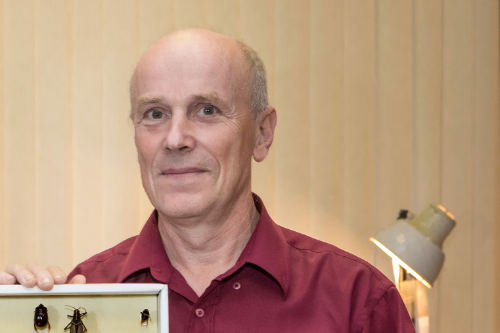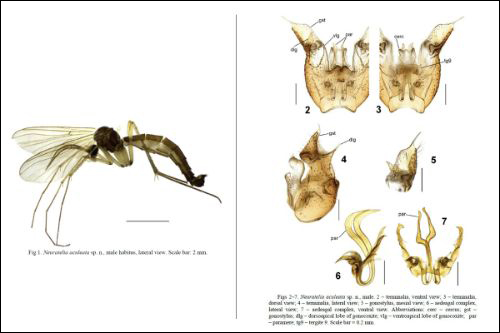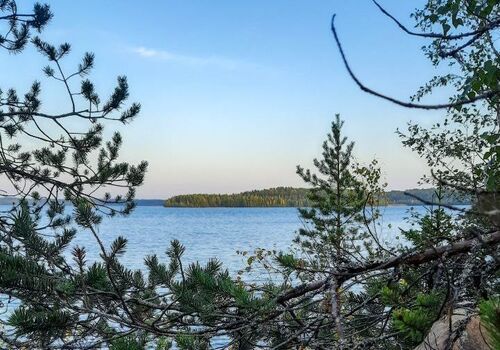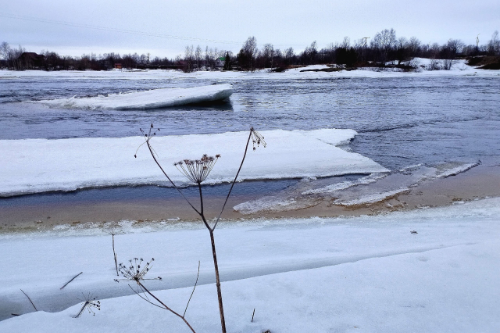Aleksey Polevoy is Russia’s well-known dipterologist, i.e. specialist on dipteran insects. One of the groups he is especially interested in is fungus gnats (Mycetophilidae) — a family of the thread-horns suborder (Nematocera). The name is based on the fact that in many of the species larvae are in some way associated with fungi: they feed on their fruiting bodies or mycelium. Some species, however, live on moss or in caves. This is one of the most numerous families: there are more than five thousand species of fungus gnats in the world. They occur on almost all continents.
– This is a highly diverse group of insects. They are widespread, in the North as well, and can be encountered even in Arctic deserts. That said, the northern fauna is quite distinctive and so far rather poorly studied, especially in Russia, where the territory is vast and often difficult to reach, – Aleksey Polevoy shared.
He analyzed the specimens received from Chukotka in the laboratory. An average fungus gnat is as small as 3-4 mm, and some of its body parts are smaller than a millimeter. Their examination and photographic documentation requires meticulous work with a microscope. In addition to morphological methods, we also applied genetic techniques. The samples were sent to Canada to be sequenced. This involves isolating a DNA fragment, after which the nucleotide sequence specific to the species is compared against previously studied samples.
It turned out that such insects have never been described in the science before. While one of the species is morphologically similar to the cognate Neuratelia nemoralis, which occurs in Karelia as well, the other one is conspicuously different from all species known for the Arctic, both in Eurasia and in North America. The results of the study were published in the Far Eastern Entomologist.
– So far, these two species have indeed been retrieved only from Chukotka and have not been encountered elsewhere. Chances are they have a northern distribution and new findings are possible, – the entomologist said.

Aleksey Polevoy – entomologist, Leading Researcher at the Forest Research Institute KarRC RAS. Photo by I. Georgievski
Scientists describing new species are supposed to give them a name. This is done according to certain rules established by the International Code of Zoological Nomenclature.
– Naming new species is not a simple task. Often, geographical names are used, e.g., animals are named after the place where they were discovered. Another common practice is to name after the scientists who worked with the group or after the collectors of specimens. In this case, I was guided by morphological considerations: one of the species has a spur, so I named it Neuratelia aculeata, from the Latin aculeatus — “stinged”. The other one is Neuratelia cornuta, from the Latin cornutus – “horned”. This was prompted by the distinctive horn-shaped processes, – the scientist explained.
Earlier, Aleksey Polevoy took part in an international study carried out by scientists from Russia, Norway, Finland, and Estonia. Its findings are published in the Proceedings of the Entomological Society of Washington.
Experts performed a revision of the Trichonta vulcani species complex using morphological and molecular genetic methods. It turned out that this pan-Holarctic taxon, which was considered to be a unity, actually comprised at least six species, differing both in DNA and in morphology. In addition, specialists evaluated the existing distribution patterns of the family of fungus gnats in the Northern Hemisphere. Sequencing results showed that the proportion of Holarctic species, i.e., those inhabiting both Eurasia and North America, is smaller than previously thought.
– It turned out that many of the species considered to have a Holarctic distribution have already become separated into North American and Eurasian ones, distinct from each other. This is important for understanding the processes of dispersal and speciation in insects. On a global scale, such data help to study the course of evolutionary processes in the nature," summarized Aleksey Polevoy.







